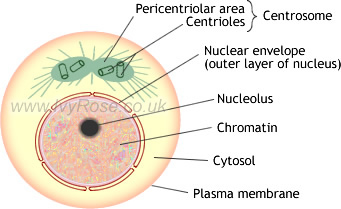Interphase
Interphase Assignment Help | Interphase Homework Help
Interphase
This is the so called ‘resting stage’ but is in fact a period of great activity. Three important processes which are preparatory to cell division take place during the interphase. (1) Replication of DNA takes place, and also the synthesis of basic nuclear proteins, the histones. (2) The centrioles divide, forming a pair of new centrioles, with are at right angles to each other. Reproduction of a centriole takes place by outgrowth of daughter centrioles from the parent centriole. (3) Synthesis of energy-rich compounds which provide energy for mitosis, and synthesis of proteins which are later found in the spindle, takes place at the end of interphase.Interphase can be divided into three periods. (1) The post-mitotic gap phase (G1) takes place at the end of one cell division. RNA and proteins are synthesized during this period, but there is no synthesis of DNA. (2) During the synthesis phase (S) DNA is formed from purine and pyrimidine nucleotides. During this period the DNA content of the nucleus is doubled. (3) During the Pre-mitotic gap phase (G2), synthesis of RNA and protein continues, but DNA synthesis stops. The time taken for the S phase, the G2 phase and mitosis is approximately equal. The length of G1 is usually greater, and is also subjected to greater variation; Cells which do not divide frequently have a longer G1 phase, while frequently dividing cells have a shorter phase. The G1 phase can be terminated by various stimuli, and cell division then starts. Once a cell has entered the S phase and has begun DNA replication, it has usually committed itself to division. During interphase duplication of the chromosomes takes place. Each chromosome (called the monad) becomes double, and is then called the dyad.

For more help in Interphase please click the button below to submit your homework assignment.